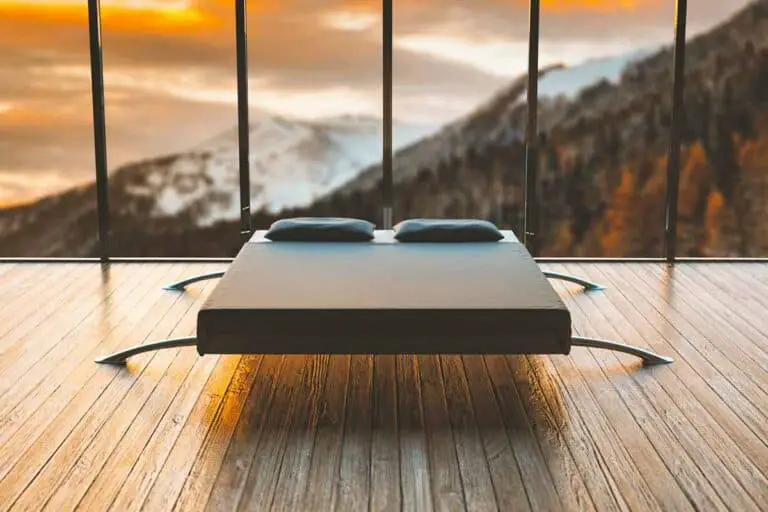Fake Memory Foam Mattress Scam (4 Ways to Avoid)
Psst… Psst…. Have I got a deal for you. Step right over to my van. Are you looking for a mattress? Uh, I mean a foam mattress. Uh, a memory foam mattress.
If this is how the conversation starts, buyer beware.
Foam mattresses are the fastest growing sector in the sleep market. That being said, with a new market sector come scammers and exploiters.
There are two areas of concern when entering the memory foam mattress market: outright fraud and deception.
Outright Fraud of Foam Mattresses
Particularly in the UK, but really anywhere, scammers take an old mattress, either innerspring or cheap foam, add a topper and encase within a new cover.
These phony mattresses are sold as new from a “retailer” to whom you have no recourse.
Not only do they not provide the quality sleep of a memory foam mattress, but they can be hazardous to your health. There is no guarantee that any fire retardation measures have been taken.
Depending on the chemicals used in the original mattress or the topper, the mattress may off-gas fumes that nauseate, cause headaches or induce other side effects. When used or poor components are used, a biohazard may be present from bug infestations and other biological byproducts.
4 Keys to Avoid Mattress Fraud
When there is good money to be made, scammers abound. The mattress industry is no different.
There are 4 things you can do to avoid being a victim of fake mattresses:
1. Read the tags.
We have all seen the “Do Not Remove…” tags. Make sure it is sewn within the seam.
The tag should identify the materials, their condition of manufacture (new), who manufactured it, and who is selling the mattress.
2. Get a guarantee.
What recourse can you take with the seller should there be a problem with your mattress?
If the seller does not operate from a brick and mortar location, how can any issue be resolved?
Do they provide free pickup should you wish to exchange or refund the product?
3. Ask smart questions.
Have the seller describe the construction of the mattress.
How many layers are there? What comprises each layer?
4. Fact-check what the seller tells you.
Whether you Google, Bing, or Yahoo Search, investigate the manufacturer and model. Double-check the contact details. Make a test call if you feel you have to.
Do not feel bad to cross-check this information in the presence of the seller. You are only protecting yourself.
If the seller and the product are legit, there’s no reason for the seller to object to these actions. Closing sales is what matters to them.
Product information should be available which should also match what you see.
How to Choose the Right Memory Foam Mattress and Avoid Being Scammed?
So, you have avoided buying from the back of a van, but you are still leery of the process. You must decide from whom to purchase and what to purchase.
The Retailer
Is this the store that is either always “Under New Management” or “Going Out of Business”?
It seems the windows are always painted with one sign or the other. Probably not the retailer who will be there for you in the long run.
These are the things you need to look for in a mattress retailer:
- Track Record – The store has been there for a number of years. You know people who have used the store. They seek repeat customers.
- Authorized Retailer – They represent known brands with reputable products.
- Ideally, for you, the salespeople will not be working on commission.
- What extras can the retailer provide? Free delivery, installation, white-glove service, take away of your prior mattress/box spring, pillows or comforters – these are cost items that you can save on if you can get the seller to take care of them for you.
The Memory Foam Mattress
You want the real deal, but there is a lot of jargon and components. The more informed you are the less likely you will be unhappy with your purchase.
Research what you are told. Take a day. If the retailer cannot make the deal tomorrow, find a different retailer.
When considering a memory foam mattress be ready to talk T-D-D (thickness, density, deflection).
These are the things about the new mattress that you need to be aware of before buying:
- Layers, layers, layers.
Most memory foam mattresses include layers for core structure and layers for comfort and support. It is the combination of layers that determine the mattress’ performance.
Are you a side, stomach, or back sleeper? This greatly affects the firmness of the comfort layer that you should go for.
- Try it out if you’re at the physical store.
Hopefully, models will be on display. Lay on it long enough for the memory foam features to activate.
Otherwise, the reputable online sellers typically offer 100 days or more for you to try out the mattress within which you can return it for a full refund if you’re not satisfied with the purchase.
- Read the fine prints on the box.
If you are looking at a “mattress in a box”, read the reviews and technical specifications. Make sure you have recourse should the mattress not perform as expected.
- Thickness.
The mattress has an overall thickness and the memory foam layer has a thickness. Support and comfort are proportional to the thickness of the memory foam layer.
Two inches may be enough for a young or lightweight sleeper. Up to six inches of memory foam may be required for heavier sleepers.
- Density.
Memory foam density is measured by pounds per cubic foot.
If the density is below three pounds per cubic foot, the memory foam will be insufficient. Top performing brands carry densities up to eight pounds per cubic foot.
- Deflection.
The mattress industry has developed a standard test to measure how memory foam deflects under load. Essentially it measures how firm or soft the memory foam feels.
Known as Indentation Load Deflection or ILD. It is suggested most sleepers prefer an ILD in the 10-14 range.
Caveat Emptor.






